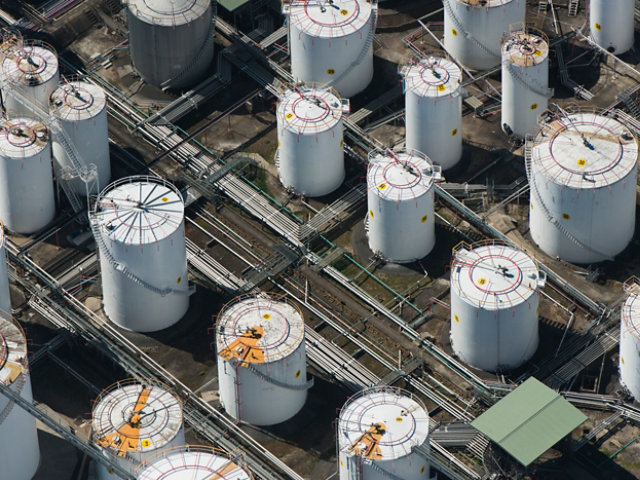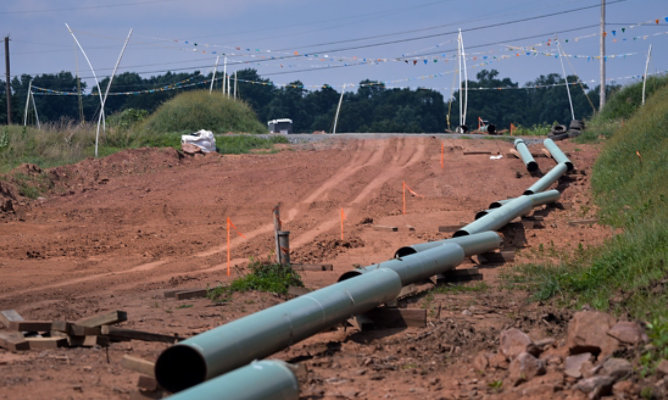
Setting the Standard - A Case for Criteria that Simplify Process Vessel Lining Selection
Directly comparable testing and data reporting for process vessel linings can help stakeholders maximize vessel lives, streamline operations and reduce costs.
Find this article on page 20 of our new custom publication, Market Pulse - Advancements in Coatings Technology, featuring industry trends and thought leadership.
By Michael Harrison, Global Product Director – Linings
Process vessels, also known as pressure vessels, deliver a critical function within oil and gas upstream operations. Subjected to elevated temperatures and pressures, these vessels are used to process hydrocarbon mixtures to remove corrosive materials from oil before transport. Asset owners and operators expect pressure vessels to remain in operation consistently, while performing over the long term to ensure productivity for hydrocarbon processing operations.
Linings are frequently used to mitigate corrosion inside process vessels and extend their service lives and maintenance cycles. Their long-term performance is important, as is the ability to return vessels to service quickly when maintenance is required. Therefore, specifiers often choose easy-to-apply and fast-curing lining technologies to reduce the time vessels are out of service.
The combined needs of long-term service and rapid service restoration require the careful selection of linings to deliver optimum outcomes. However, complicating the matter for asset owners, operators and specifiers is the dearth of available product performance and testing data and the lack of a universally accepted standard detailing how coating manufacturers should report that data.
Ultimately, all parties involved in choosing linings for process vessels would benefit from an optimized standard that offers directly comparable testing and data reporting. Achieving this goal would, in turn, help key stakeholders specify linings that maximize vessel lives and streamline operations, helping them to also reduce costs.
When selecting a suitable lining material, specifiers should consider: the composition of any oil and water inside the vessel; the vapor composition of the vessel contents; the minimum and maximum pressures; the operating temperature (and whether temperature gradients may be an issue); and the use of process chemicals and cleaning procedures, which can be more aggressive than the operation itself.
The Impact of Operational Stresses on Lining Selections
Many different types of pressure vessels exist, and the lining demands for each type differ according to a unique set of requirements for the process and the vessel’s contents. In choosing the correct lining, specifiers must consider the precise source of the crude oil being processed, as each source has a unique temperature, acidity level and gas content. In addition, the presence of any abrasive media, such as sand, should be considered in some separators. The choice of lining type also depends on the different chemicals used during the extraction and treatment processes, as well as the different temperatures and pressures required. Due to the accelerated pace at which plant maintenance must be conducted, specifiers generally insist on procuring linings that can be applied and cured quickly.
Operating conditions in process vessels vary considerably. When selecting a suitable lining material, specifiers should consider: the composition of any oil and water inside the vessel; the vapor composition of the vessel contents; the minimum and maximum pressures; the operating temperature (and whether temperature gradients may be an issue); and the use of process chemicals and cleaning procedures, which can be more aggressive than the operation itself.
Linings inside process vessels are also subjected to different types of stresses during a plant’s operation. For example, linings inside test separators experience frequent decompressions and the effects of acids from well workovers. Moreover, secondary and tertiary production separators may endure heating and temperature cycling between primary and secondary separators. Both examples demonstrate how fluctuating process vessel conditions should be considered in testing protocols to ensure the lining performs against a range of conditions.
Challenges Complicating Lining Specification
Plant owners and operators face a dilemma when specifying linings for process vessels. They are often unsure which lining materials, out of myriad available options, offer the best protection for a given application and situation. During the selection process, it is imperative that owners of process vessels consider multiple factors related to the unique operational environment and field requirements.
In particular, vessel owners should make their lining selections based on likely plant conditions, which are dictated by chemical exposure, operating temperatures (including potential temperature gradients) and pressures. The lining selection may also depend on certain field requirements, in which rapid application and cure are more important than long-term, consistent performance.
To determine the proper lining material, those who specify also need to consider the design of the pressure vessel. For example, some vessels have limited access and may feature pipes and baffle plates inside, making them difficult to line. Products that are easier to apply – such as high-solids, edge-retentive coatings – should be specified in such cases.
The Need for Comparative Data
For process vessel owners and operators, the process of selecting an appropriate lining is complicated by the lack of standardized comparative data for proposed lining solutions. In many situations, owners and operators are forced to make selections using data that are often confusing, contradictory or incomplete. In certain cases, the lining chosen may be inadequate for the required service or it may be considerably more durable than needed, thereby adding unnecessary costs.
It would behoove the coatings industry to help owners and operators make more accurate comparisons among available lining materials, so they can arrive at the optimal solution for a given application and situation. Doing so will help owners and operators optimize the costs associated with lining vessels. Of course, there will always be situations in which testing based on each project’s customized needs may be required.
One appealing solution is to standardize testing and reporting data so asset owners and operators can make true, apples-to-apples comparisons among lining options. In turn, they will be better equipped to arrive at an educated final decision based on relevant, comparable data. Such standardized test results would allow end users to make proper risk assessments about the best linings to use for specific applications.
The Value of a Standardized Approach
There are two primary immersion standards used by lining manufacturers to simulate the corrosive conditions that occur inside pressure vessels. One is an autoclave test, which exposes the lining to selected chemicals under established temperatures and pressures, according to NACE TM0185. The second is a pressurized atlas cell test, which simulates the immersion conditions seen in a process vessel with an externally exposed wall to evaluate the chemical resistance and permeability of the coatings, according to NACE TM0174.
These standards simply detail the methods for conducting the tests, and they do not specify set exposure conditions, nor do they include pass/fail criteria. Therefore, one manufacturer may run one test for a certain number of hours, while another manufacturer could run that same test for twice as long. If each test conducted for each manufacturer’s respective product results in a successful outcome, the test with the longer exposure will appear as if it is more robust. However, there is the possibility that the material tested using the shorter exposure would perform as well as – or even better than – the one tested using the longer exposure. In addition, with no pass/fail criteria in play, the reported results may be subjective.
Some national oil companies use both the autoclave and pressurized atlas cell tests to qualify linings. However, their test conditions vary considerably and may not be wholly representative of the actual process vessel conditions. Therefore, it is often difficult to translate such test results from one set of conditions to a broader set of conditions.
Consequently, there is a critical need for an international standardized approach that sets some minimum parameters to help owners and operators during the lining selection process. Such a standard would provide criteria that coating manufacturers would use for testing and reporting data. In turn, the availability of standardized reporting would make it easier for owners and operators to vet and select linings.
Next Steps
Engineers from oil and gas companies already have corrosion control protocols that determine how they design and construct process vessels. Arriving at a similar selection process for linings would be beneficial. Such an initiative would require tests that demonstrate the performance of the linings, potentially divided into categories based on temperature and/or pressure. The protocols may include testing linings exposed to a variety of chemicals¾such as gases, hydrocarbons and aqueous phases¾under different temperatures and pressures for a standard duration. Then the lining could be tested before and after exposure to demonstrate its performance.
Abrasion-resistance testing also should be considered for certain types of process vessels, such as test and primary separators. Other types of vessels would not likely require such testing. In addition, exposure to steam cleaning processes would need to be evaluated, as steam is often used to clean vessels between process batches.
Finally, further testing should consider a vessel’s exposure to process chemicals, such as amine scrubbers used to strip hydrogen sulfide (H2S) and carbon dioxide (CO2), at higher temperatures.
The Path Ahead with Key Industry Stakeholders
There will always be a need for customized testing that enables owners and operators within the hydrocarbon processing industry to suit each lining type to the unique requirements of its process vessel environment. However, data from an optimized standard would allow process vessel owners and suppliers to have a much better idea of whether a particular lining will be acceptable for their needs. Such data may also allow for greater risk management during the selection process.
Moving forward, the nature and substance of such a standardized approach will require a consensus among all industry stakeholders. Sherwin-Williams believes the hydrocarbon processing industry is ready to take this next step. The company looks forward to sharing responsibilities with all stakeholders to bring greater transparency to the testing and reporting of data, for the purpose of optimizing the lining selection process for major industry players.
Discover More
Industry Expertise and Innovation
See how we help customers find customized solutions for their project and application challenges.
Our Oil & Gas Expertise
Explore our industry solutions and technology to help protect your assets.
LEARN MOREProduct Lookup
Find out more about our innovative coatings for a variety of industries.
FIND A PRODUCT
